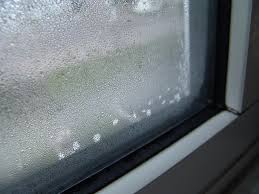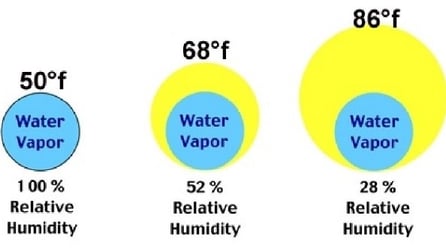Condensation, moisture absorption and, subsequently, mold or organic growth are often a result of high indoor dew point combined with cool surface temperatures.
For example, if a facility’s indoor dew point is above 60oF, it is possible that moisture will begin to condense on cool surfaces like ductwork, chilled water supply lines, windows, or refrigeration systems. This collection of moisture can cause damage to the building, as well as to merchandise. It can even promote organic growth over time.

In addition to the risk of moisture accumulation, ASHRAE recommends maintaining a dew point below 62 oF to meet thermal comfort for approximately 80% of occupants; a dew point of 45 oF is recommended to maintain summertime humidity comfort levels.
Monitoring Dew Point
Consider this: You are a kid in a candy store with a plethora of delicious options in front of you. You sort through the store and boil your decision down to two candy bars.
Option A: The tried and true milk chocolate bar. Nothing fancy but classically delicious.
Option B: Fluffy nougat topped with caramel and peanuts, coated in milk chocolate. An exciting snack bursting with flavor.
Did you choose Option A or Option B?
If I had to guess, you chose Option B as it gives you more variety with your purchase! Now, what if I told you that the decision you just made also can apply to thermal HVAC design and dew point monitoring principals?
Option A: A design principal of maintaining 60% relative humidity (RH).
Option B: A design principal of maintaining a 60oF dew point.
Both are similar and help maintain a healthy building, but maintaining a 60oF dew point (Option B) is inherently better and offers a more reliable risk indicator. Using 60% RH as an indicator (Option A) is unreliable as it creates needless concern when air temperature is cool. In the example below, you can see that the amount of water vapor in the air remains the same while relative humidity concentration varies depending on the temperature of the air.
Conversely, a facility manager or building owner may have a false sense of security when indoor air temperature is above normal levels because relative humidity will decrease as air temperature rises. These reasons are why dew point should be used as a threshold of concern. Dew point will not only factor in moisture content and temperature of the air but also provides a risk indicator for condensation and moisture absorption, which should be a facility manager’s primary concern.
Using Indoor Dew Point as a Risk Indicator
If you are already using indoor dew point as a risk indicator for indoor moisture activity, then continue to do so! Specifically, look to ensure that indoor dew point remains below 60 oF during cooling operations to reduce the risk of moisture absorption, condensation, and organic growth.
If you are not using indoor dew point as your risk indicator, now is the time to do so! You could be surprised to learn that measuring relative humidity alone may not be keeping your facility safe.
If you are already noticing signs of moisture accumulation, mold or organic growth, then ASHRAE recommends implementing the following HVAC factors to reduce your risk:
- Ensure that ventilated air is dehumidified to a dew point below the indoor dew point when the building is in cooling mode.
- Ensure that all condensation inside HVAC components is being properly drained.
- Ensure that indoor surfaces are not cooled to temperatures below indoor dew point during occupied and unoccupied modes.
- Keep indoor dew point low enough to ensure that condensation does not occur on cool surfaces of HVAC components, building materials, or building furnishings.
- Ensure that humidifiers are sized, installed, and controlled properly to avoid the risk of overloading indoor air with humidity.
- Ensure that cool HVAC and plumbing components are properly insulated to keep their surfaces about 10 oF above indoor dew point.
These simple steps — in addition to proper HVAC ventilation, indoor air monitoring, indoor air verification, and keeping an eye on seasonal changes — can help ensure that your facility is operating in a safe manner while reducing risk of mechanical damage, moisture accumulation, or organic growth.
If you would like to learn more about ways in which your indoor air environments can be improved, please reach out to us via the form below, contact us by phone at (513) 965-7300, or email positiv@melinkcorp.com.

